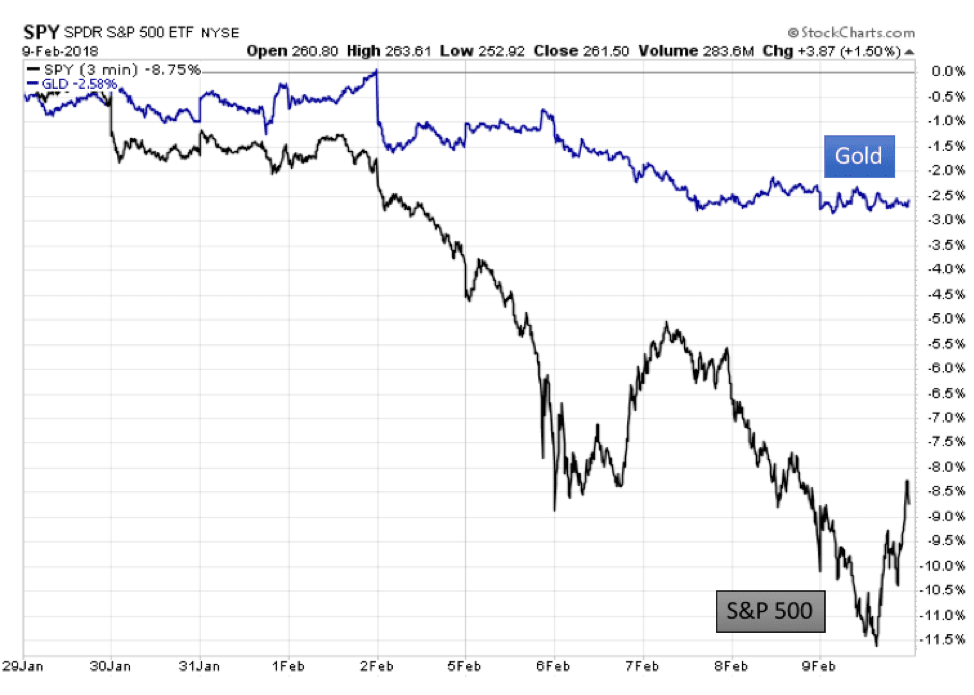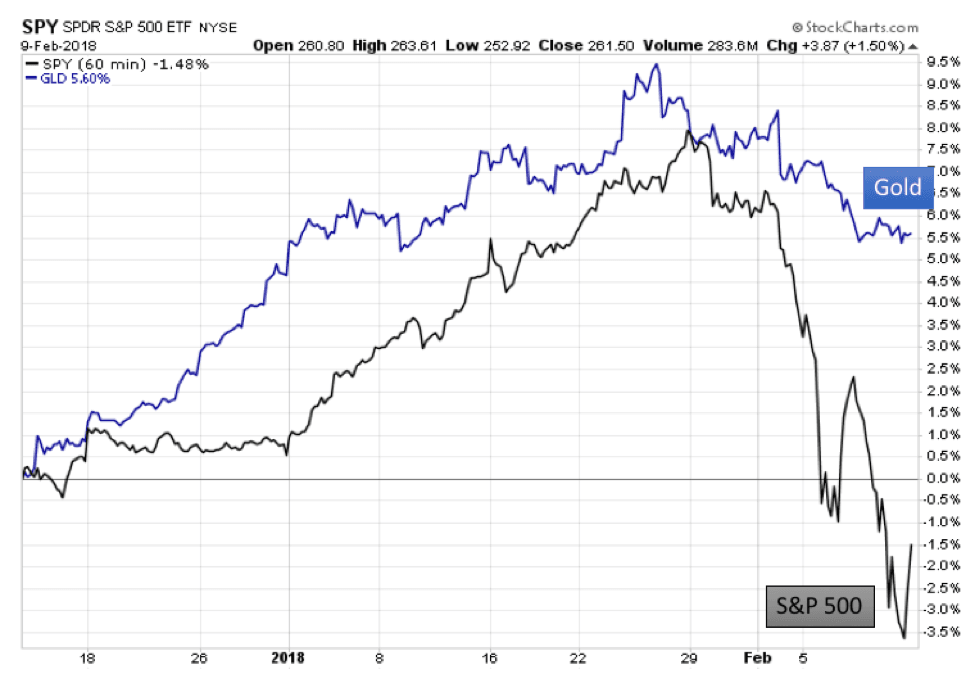Last week’s news was largely focused on the record lows reached by the stock market and the overall volatility it experienced over the past two weeks. Historically, during times of a struggling stock market, gold experiences a boost. This past week, however, gold did not increase, even while the stock market fell from its peak by more than 11%. A lot of points factor into the prices of precious metals, but our focus today is on one in particular: the forward-looking of markets.

To explain this, we should first discuss the base facts: since the high of 2872 reached by the stock market on January 29th for the S&P Index, the broad market has fallen to 2532, a decrease of more than 11%, before undergoing a mild rebound on Friday. Throughout this time period, gold decreased by approximately 2.5%. In the next few weeks, we will cover the actions of silver during this timeframe, but for now, our focus will be gold.
The question today is this: at such an important moment, did gold fail?
The Foresight of Markets
Our theme today is the forward-looking of markets, the fact that they can both foresee and respond to events that have not yet occurred. Therefore, it is not surprising for the market to move against the tide that is expected of it.
An example of this is the movement of these same asset classes since the low in metals that have occurred since December:
Looking at a wider time period shows us that gold has actually maintained its value well in comparison to the stock market as a whole.
One possibility that we could consider with this information is that some investors, predicting that the broad market was headed for a steep decline, were moving the profits made from their stocks into precious metals.
Using Gold as a Form of Insurance
Looking at insurance as an example provides further basis for our theme that markets are forward-looking. A homeowner does not purchase insurance after they see flames in their windows, or car insurance in the moments following a car accident. Like this, one job that gold does is acting as wealth insurance, in that investors who have made a profit from other assets and are forward-looking will purchase gold when times are good, or in keeping with our metaphor, before the car accident has occurred, before the flames, when it is not yet needed.
Knowing this, consider that if gold increased before the fall, what can we imagine would happen during the crash itself?
Like insurance, people may have to cash-in their policy at the time of an accident. In this situation, this cashing-in shows up in the form of a mild decline happening at the same time as that of the stock market. An investor who used gold as an insurance policy these past months will have suffered fewer losses than one who kept their full investments in the stocks. Gold did the job that it was intended to do here, by significantly protecting the profits earned by that investor who was forward-looking.
Of course, there is no perfect insurance policy. Sometimes premiums are taken and never recouped, others the policy does not completely cover the losses, but one thing is true: some insurance is always better than none at all.
Consider the benefits of a wealth insurance policy before it becomes necessary. Perhaps the recent stock market crash was an isolated event, but perhaps it is simply a tremor before the real crash starts. It is impossible to know for sure, but knowing your options, like wealth insurance, allows you to make the best decisions going forward while the stock market recovers.
It is our strong recommendation that every investor regularly accumulate physical gold as a means of insurance.
The Popularity of Insurance
Not even 1% of Americans today own any gold at all. Less than 1% use physical gold as wealth insurance. What if that number were to double and 2% of the American people did? Or it grew to 10%? This is something that we plan to more fully explore in a future post, but if demand for a finite insurance policy like this one ever grew to such a number, gold’s value would be pushed higher by a multiple of today’s prices.
However, speculation and insurance belong in separate categories. The final note we leave you with today is that every investor should have gold as insurance, most importantly when they least expect that it is necessary.
Bullion Exchanges is located at 30 West 47th Street in New York City’s Diamond District and is open Monday through Friday 9 A.M. to 5 P.M., by phone at 800.852.6884, or online anytime at BullionExchanges.com. Our friendly team can address your Precious Metals investing questions and can help you with any bullion purchasing or selling requests.
All market review articles are provided as a third party analysis and do not represent the views of Bullion Exchanges and should not be considered as financial advice in any way.








